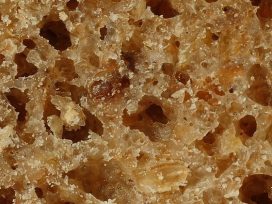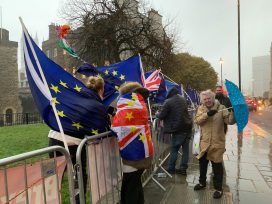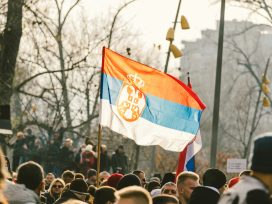There’s something in the water
Steady access to safe, drinkable water is still a privilege, and Europe is struggling with ever-worsening droughts. The new episode of the Standard Time talk show discusses chemical hazards, eco guerrillas, and why we can never have enough pelicans.
Groundwater supplies 65 % of the drinking water used in the EU. Europe has a great average performance when it comes to water infrastructures, and much of the continent is geographically lucky to have access to this resource. But it’s not universal, and things have been breaking down in recent years as climate change shows its effects and the South, the East and even Central Europe are gradually drying up. Climate change and pollution are doing a number on drinking water supplies, but corporate use is also a problem.
Commercial overuse leaves local residents thirsty
In the Mexican town of San Cristobal De Las Casas the local Coca-Cola bottling plant is reported to consume most of the community drinking water, which has driven locals to buy bottled drinks instead, including those with a high sugar content. This trend is suspected to be behind a staggering figure: 35% of the population of San Cristobal De Las Casas lives with diabetes. This Mexican case probably contributed to the suspicion of activists in Lüneburg, Germany, who have raised the alarm about Coca-Cola’s plans to pump more groundwater out of the heathland there. This is heavily criticized and protested by local initiatives like ‘Fridays for Future’ or ‘Unser Wasser’ (Our Water).
In Georgia, Moldova and Azerbaijan, water scarcity has been a problem over the past two decades, and extreme droughts have been frequenting Ukraine, Romania, and Hungary, as well as most South European countries. One of our guests today, Gergely Pápai has been reporting on the effects of last year’s droughts and even guerilla activities in restoring wetlands for the health of a natural habitat.
Yet, even when water is present, agricultural and industrial pollution pose a huge problem.
Contaminants
‘The main problem in the region’s rivers is the high concentrations of ammonium (NH4) and phosphate, caused by discharges of untreated or insufficiently treated wastewater and by agriculture,’ according to an EEA report.
You can also listen to the Standard Time talk show in a podcast format on CBA, or wherever you get your podcasts.
In most regions of the world, over 70 percent of freshwater is used for agriculture. But the IT sector follows closely. Microsoft reports a water consumption of 1.7 billion gallons in 2022, Google 5.56 Billion gallons in the same year, and this will all just increase with the implementation of AI. Every time you ask ChatGPT a series of between 5 and 50 prompts or questions, it gulps up 500 milliliters of water.
On the tap
Europe’s relationship to drinking water is a very privileged one. Western Europe has some of the cleanest tap water in the world, and yet, more than 50 million people have switched to single-use plastic bottled water instead in the last 20 years. A strong marketing push from beverage companies to profile bottled water as a superior choice, even where its quality is no better than the publicly available water.
In some cases, infrastructure poses problems. In Barcelona, for example, the water comes from the Llobregat river and a combination of chlorine, hardness, and a lot of minerals gives it a very poor taste. If we look at the East of Europe, the loss of trust in governments plays a vital role. After the fall of Communism, many across the region adopted a more individualistic mindset, and the mistrust in government-managed public services, such as water management, was one of the victims.
Today we are happy to welcome three experts to tell us their knowledge when it comes to our relationship with water and how this will change due to climate change.
Guests
Oana Filip writes about culture and life. She is a journalist for Scena9, a Romanian magazine and website. She is passionate about rural life, memes and existential questions.
Gergely Simon is an environmental chemist at Greenpeace in Budapest and the Pesticide Action Network Europe in Brussels, dedicated to campaigning and reducing pollution’s impact on ecosystems and human health.
Gergely Áron Pápai is a documentarian and the head of the video division at the Hungarian investigative portal Átlátszó. Issues of environment are his recurring topic, and his film of last year’s drought went viral in the peak of the August heat.
Production
Creative team
Réka Kinga Papp anchor
Daniela Univazo writer-editor
Merve Akyel art director, Eurozine
Szilvia Pintér producer
Priyanka Hutschenreiter project manager
Julia Sobota captions and translations
Zsófia Gabriella Papp digital producer
Management
Judit Csikós finance
Réka Kinga Papp editor-in-chief
Csilla Nagyné Kardos office administration
Video Crew
Gergely Áron Pápai Video Recording
Bence Bodoky Video Recording
István Nagy Sound Recording
Postproduction
Nóra Ruszkai video editor
István Nagy lead video editor
Milán Golovics dialogue editor
Art
Victor Maria Lima animation
Crypt-of-Insomnia theme music
Hosted by
Társadalomtudományi Kutatóközpont
Disclosure
This talk show is a Display Europe production: a ground-breaking media platform anchored in public values.
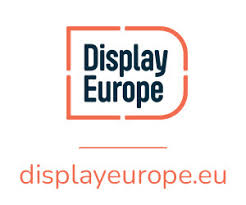
This programme is co-funded by the Creative Europe Programme of the European Union and the European Cultural Foundation.
Importantly, the views and opinions expressed here are those of the authors and speakers only and do not necessarily reflect those of the European Union or the European Education and Culture Executive Agency (EACEA). Neither the European Union nor the EACEA can be held responsible for them.

Published 18 April 2025
Original in English
Published in
In collaboration with
In focal points
Newsletter
Subscribe to know what’s worth thinking about.
Related Articles
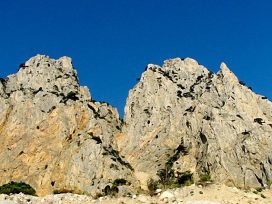
Mineral rush
Topical: Critical raw materials
Why does peace in Ukraine hang on a ‘mineral deal’ whose handling is more reminiscent of trade than negotiations? Perhaps because the global race for critical raw material mining is well and truly underway, digging for today’s equivalent of gold: raw earth elements and lithium critical for renewables and digital technology but also modern weaponry.

Excitement over ‘rare’ elements
Julie Klinger in conversation with Misha Glenny
The race for green transition supplies is on. But where’s the thrill in metals, discreet and hidden yet widespread? Mining, intensive due to low concentrations, throws up waste elements like arsenic. Space cowboys and deep-sea dredgers contest environmental stability more than China’s monopoly, based on 40-years of involved processing. Health and recycling regulations are a must.

